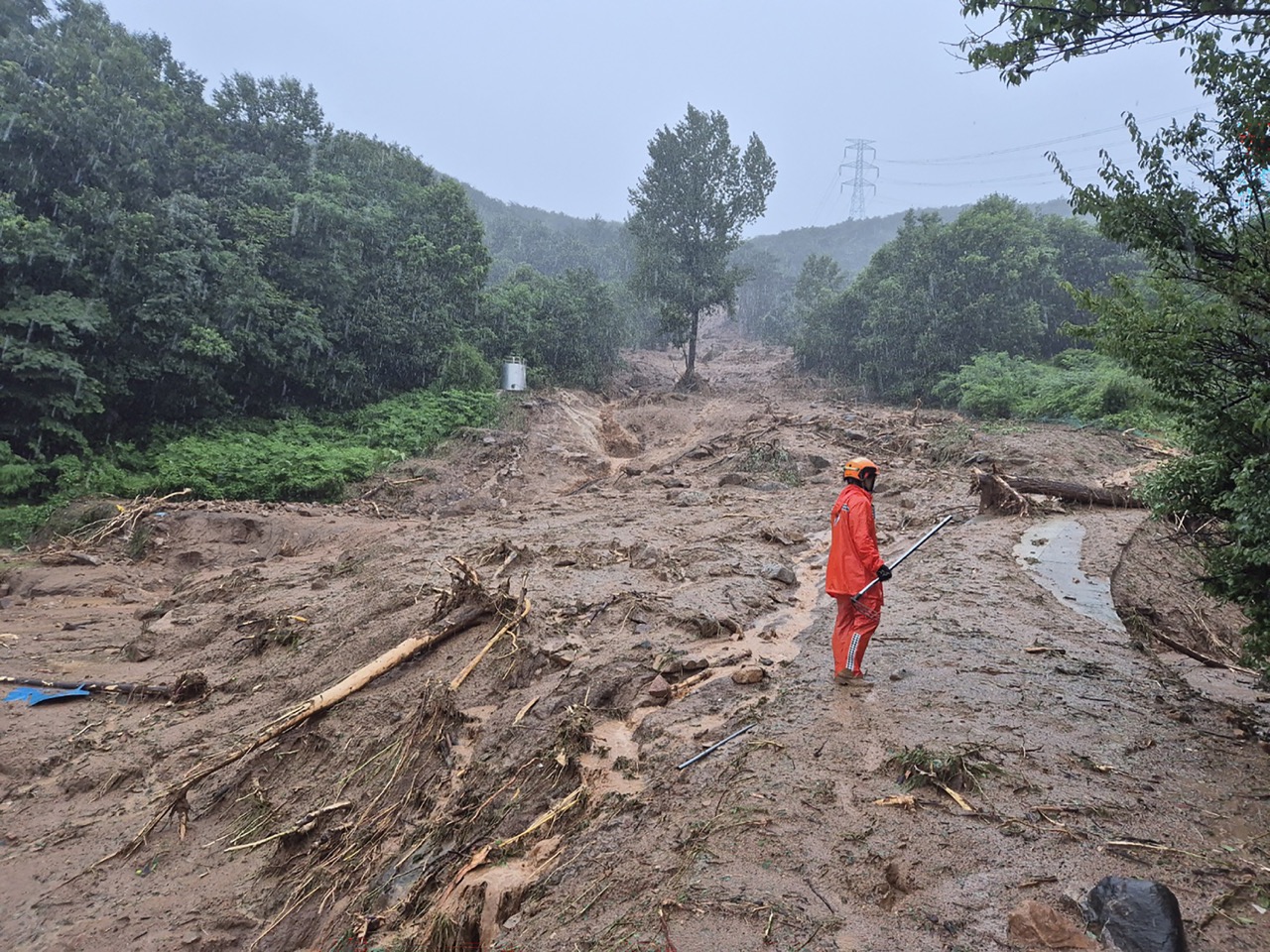South Korea's Ministry of Interior and Safety announced today that rescuers have found two more bodies, bringing the death toll to 14 after five days of torrential rain. The victims were a woman in her seventies, killed when her house was buried in a landslide, and a man in his forties who drowned.
Most of the 14 deaths occurred in Sancheong County, South Gyeongsang Province, which has seen nearly 800 mm of rain since the middle of last week. Gapyeong County, Gyeonggi Province, about 70 km east of Seoul, also received 170 mm of rain.
 |
The scene of a landslide in South Gyeongsang Province on 19/7. Photo: *AFP* |
Officials are concerned the death toll will rise further, with at least 12 people still missing. Interior and Safety Minister Yun Ho-jung announced that South Korea will establish a special task force to support local authorities in dealing with the aftermath of the disaster, focusing on monitoring damage from heavy rain and landslides.
"The Ministry of Interior and Safety, related ministries, and local governments will mobilize all available resources," Yun said, adding that officials will propose to President Lee Jae-myung that the hardest-hit areas be declared "special disaster zones."
Prime Minister Kim Min-seok directed Agriculture Minister Song Mi-ryung to visit Sancheong County to assess the situation and provide support. He also asked the interior and safety minister to visit affected areas early next week to meet with residents and develop specific support plans.
South Korea often experiences heavy rainfall in July. Despite preparations, some areas in the south of the country were caught off guard by the record rainfall.
Scientists say climate change is making extreme weather events more frequent and intense around the world. In 2022, South Korea experienced record rainfall that killed at least 11 people.
Thanh Danh (*AFP, Yonhap*)












